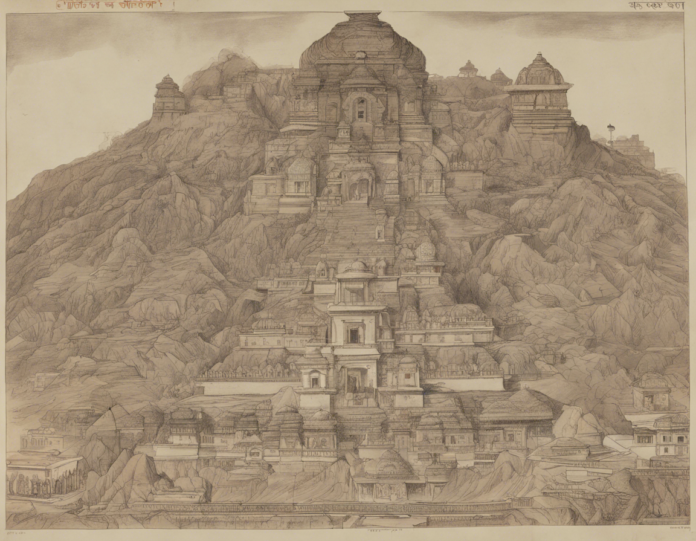The Vinayapatra holds a significant place in the vast tapestry of Indian history and culture. This ancient manuscript, also known as Bahi-Patta, dates back centuries and is a vital document that sheds light on the socio-political landscape of ancient India. In this article, we will delve into the deep roots of the Vinayapatra, exploring its origins, significance, content, and enduring legacy.
Origins of the Vinayapatra
The Vinayapatra finds its origins in the rich tradition of Indian documentation and record-keeping. The term “Vinayapatra” itself is derived from the Sanskrit words “Vinaya” meaning discipline or rules, and “Patra” meaning leaf or document. This manuscript served as a record of laws, decrees, and important events during various periods in Indian history.
Historically, the Vinayapatra was created by scribes or royal court officials who meticulously transcribed the edicts and proclamations issued by rulers. These documents were often inscribed on palm leaves or parchment using intricate calligraphy and were preserved with utmost care. The Vinayapatra played a crucial role in maintaining order, preserving knowledge, and upholding the authority of the ruling elite.
Significance of the Vinayapatra
The Vinayapatra holds immense significance as a primary source of historical information and as a reflection of the governance systems prevalent in ancient India. These manuscripts provide invaluable insights into the social structure, legal frameworks, economic policies, and cultural practices of different dynasties and empires.
Key Points:
– Historical Documentation: The Vinayapatra serves as a valuable resource for historians, archaeologists, and researchers studying the political and administrative history of ancient India.
– Legal Codes: Many Vinayapatras contain detailed accounts of legal codes, judicial proceedings, and administrative regulations, offering a glimpse into the justice system of bygone eras.
– Cultural Heritage: Through the Vinayapatra, we can unravel the cultural ethos, religious beliefs, and societal norms prevalent in different regions of ancient India.
Content of the Vinayapatra
The content of the Vinayapatra encompasses a wide range of subjects, reflecting the multifaceted nature of governance and society in ancient India. These manuscripts contain a mix of legal decrees, royal edicts, administrative orders, land grants, tax records, and diplomatic correspondence.
Types of Content:
1. Legal Decrees: Rulings and judgments issued by kings or ruling authorities, outlining codes of conduct and resolving disputes.
2. Administrative Orders: Directives related to governance, taxation, public works, and maintenance of law and order.
3. Land Grants: Endowments of land to temples, Brahmins, or loyal subjects in recognition of their service or devotion.
4. Tax Records: Accounts of revenue collection, tributes, and levies imposed on various sections of the population.
5. Diplomatic Correspondence: Communication between rulers, emissaries, and foreign dignitaries regarding alliances, treaties, and trade agreements.
Legacy of the Vinayapatra
The legacy of the Vinayapatra endures through its influence on the archival practices, bureaucratic systems, and legal traditions of India. Many principles and precedents laid down in these ancient manuscripts have shaped contemporary governance and judicial frameworks. The Vinayapatra stands as a testament to the enduring power of written records in preserving heritage and knowledge across generations.
Key Aspects of Legacy:
– Archival Practices: The meticulous preservation and cataloging of historical records in the Vinayapatra set a precedent for subsequent archival practices in India.
– Legal Heritage: Many legal concepts and precedents found in the Vinayapatra continue to influence modern legal systems and judicial interpretations.
– Cultural Continuity: The Vinayapatra bridges the past and the present, connecting modern Indians with their cultural roots and historical legacy.
Frequently Asked Questions (FAQs) about the Vinayapatra
What is the significance of the Vinayapatra in Indian history?
The Vinayapatra is significant as a primary source for understanding the political, legal, and cultural practices of ancient India. It offers insights into governance, administration, and societal norms prevalent during different historical periods.
How were Vinayapatras created and preserved?
Vinayapatras were typically written on palm leaves or other durable materials using meticulous calligraphy. These documents were preserved in dry and secure locations to prevent decay and damage.
Can anyone access Vinayapatras for research or study purposes?
Many Vinayapatras are housed in museums, archives, and academic institutions where researchers and scholars can access them for study. However, some Vinayapatras are rare and delicate, requiring special permission for viewing.
What are some famous Vinayapatras from Indian history?
Famous Vinayapatras include the Ashokan Edicts, the Allahabad Pillar Inscription of Samudragupta, and the Chola Copper Plates recording land grants by the Chola dynasty.
How do Vinayapatras contribute to our understanding of ancient Indian society?
Vinayapatras provide firsthand accounts of governance, legal systems, social hierarchies, economic structures, and cultural practices prevalent in ancient Indian society. They offer a direct window into the past.
Are there any translations available for Vinayapatras written in ancient scripts?
Yes, many scholars and epigraphists have deciphered and translated Vinayapatras written in ancient scripts like Brahmi, Prakrit, Sanskrit, etc. These translations help make the content accessible to a wider audience.
What challenges do historians face in interpreting Vinayapatras?
Interpreting Vinayapatras can be challenging due to the complex language, historical context, and variations in script styles. Decoding the nuances of legal terminology and royal proclamations requires expertise and meticulous analysis.
How do Vinayapatras differ from other historical documents like inscriptions or manuscripts?
Vinayapatras are specifically known for their emphasis on legal and administrative matters, making them unique compared to religious inscriptions, literary texts, or personal manuscripts. They provide a structured view of governance and public policies.
Are there any ongoing research projects focused on studying Vinayapatras?
Yes, many research projects are currently underway to analyze, catalog, and digitize Vinayapatras for preservation and scholarly purposes. These initiatives aim to unravel more aspects of ancient Indian history through these valuable documents.
How can the public contribute to the preservation and promotion of Vinayapatras?
Public awareness, support for heritage conservation efforts, and patronage of research initiatives can help in the preservation and promotion of Vinayapatras. Encouraging interest in ancient history and cultural heritage can also raise awareness about the significance of these documents.
In conclusion, the Vinayapatra stands as a pivotal artifact in the historical narrative of India, offering a glimpse into the intricate tapestry of governance, society, and culture that shaped the subcontinent over millennia. By delving into the origins, significance, content, and legacy of the Vinayapatra, we can appreciate its enduring relevance in understanding our past and preserving our heritage for future generations.


Recent comments